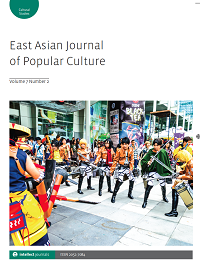-
f What text can tell us about male and female characters in shōjo- and shōnen-manga
- Source: East Asian Journal of Popular Culture, Volume 1, Issue 1, Apr 2015, p. 133 - 153
-
- 01 Apr 2015
Abstract
The manner in which manga can reflect and influence readers’ gender perceptions has been a frequently researched issue. This article is an attempt to consider those questions through language, a traditionally less-examined element, in order to shed new light on how male and female characters are used in manga. To do so, I use a linguistic corpus of ten popular shōjo-manga and shōnen-manga to look at (1) how much of the text found in speech bubbles was spoken by male and female characters; and (2) how many characters were seen. With regards to approximately 80% of all text, the corpus shows that shōnen-manga are extremely skewed towards male characters, compared to shōjo-manga, which is more balanced between female and male characters. While many more characters appear in shōnen-manga, the majority are male. Furthermore, only two female characters in all of the shōnen-manga series account for more than 10% of text, whereas all the shōjo-manga have male characters accounting for over 12%.
In examining why this might be, I suggest that the focus on interpersonal relationships – including both friendship and romance – in shōjo-manga may lead to a smaller cast of characters and better balance between male and female characters. However, with authors usually writing for their own gender, I also maintain that it is related to differences in the roles of women and men in Japanese society. These distributions also have an impact on characterization itself, particularly in regards to the use of gendered speech patterns. With insight from Kinsui’s yakuwari-go, or role-playing language (2003), I specifically argue that the results predict that shnōen-manga will use more stereotypical speech, particularly in depicting female characters. In offering supporting evidence for this hypothesis, I suggest that this may affect how readers engage with the characters, thus creating different types of reading experiences within the genres. Through this discussion, it will become clear that linguistic data can shed light into how characters are manipulated in manga on a variety of levels, thus appealing to its potential as a legitimate and unique approach to manga research.


